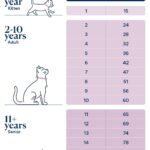Understanding opportunity cost and comparative advantage is crucial for making informed decisions in economics and business. This article provides a step-by-step guide on how to calculate both concepts, using practical examples for clarity. We’ll explore how to determine which country has a comparative advantage in producing specific goods, leading to specialization and potential gains from trade.
Calculating Opportunity Cost
Opportunity cost represents the potential benefits an individual, investor, or business misses out on when choosing one alternative over another. In the context of comparative advantage, it refers to the cost of producing one good in terms of another good forgone. Let’s illustrate this with an example of iron ore and car production in Australia and China. Assume China can produce a maximum of 80 units of iron ore or 100 cars, while Australia can produce 70 units of iron ore or 50 cars.
1. Calculate the Opportunity Cost for Each Good in Each Country:
-
China’s Opportunity Cost of 1 Iron Ore Unit:
- China can produce 80 iron ore or 100 cars.
- Divide both sides by 80 to find the opportunity cost of 1 iron ore unit: 1 iron ore = 1.25 cars.
-
China’s Opportunity Cost of 1 Car:
- Using the same logic: 1 car = 0.8 iron ore.
-
Australia’s Opportunity Cost of 1 Iron Ore Unit:
- Australia can produce 70 iron ore or 50 cars.
- Therefore: 1 iron ore = 0.71 cars.
-
Australia’s Opportunity Cost of 1 Car:
- Therefore: 1 car = 1.4 iron ore.
Determining Comparative Advantage
2. Compare Opportunity Costs: A country has a comparative advantage in producing a good if it can do so at a lower opportunity cost than another country.
3. Identify Comparative Advantage:
- Australia: Lower opportunity cost for iron ore (0.71 cars vs. 1.25 cars for China).
- China: Lower opportunity cost for cars (0.8 iron ore vs. 1.4 iron ore for Australia).
Conclusion: Australia has a comparative advantage in iron ore production, while China has a comparative advantage in car production. This suggests that Australia should specialize in producing iron ore and China in cars, leading to potential gains from trade if they exchange these goods.
